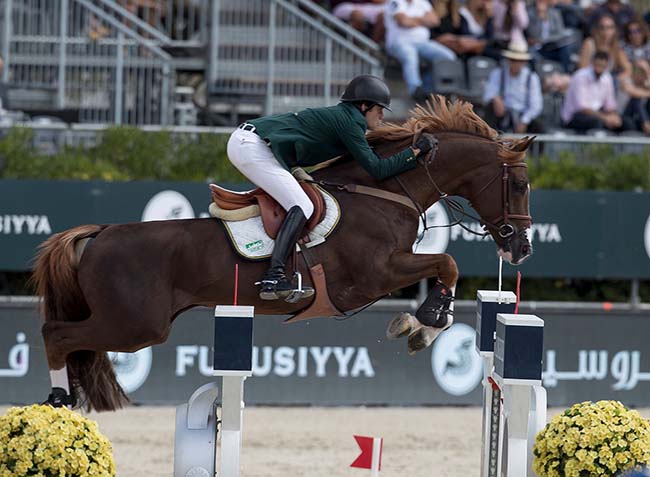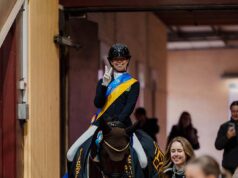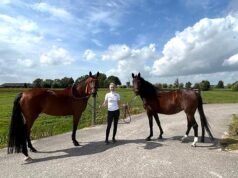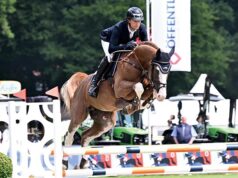By Christopher Hector and Gemma Alexander
Graphics: Gemma Alexander
Photography: FEI
I find it intriguing and disturbing that even recent history can just 'disappear'. The first online horse rankings on the WBFSH website are for 2004, and their earliest ‘World Breeding Guide – The Sporthorse Source of Information’ I can find in my personal library is the 1993/94 media guide, where Dirk Zagers supplied a fine analysis of the top jumping stallions of the day.
Zagers looked at two tables, the first ranking sires according to the number of offspring in international competition, the second according to WBFSH scores, and there's not a dud sire in either.
Ranked by offspring:
1. Jalisco B - 8 progeny
1. Ramiro - 8
3. Landgraf - 5
3. Polydor - 5
3. King of Diamonds - 5
6. Grannus - 4
6. Pilot - 4
6. Lord - 4
9. Feinschnitt I - 3
9. Zeus - 3
9. Uriel - 3
9. Clover Hill xx - 3
9. Irco Marco - 3
The cast was much the same for the rankings according to WBFSH scores:
1. Jalisco B - 1841
2. Ramiro - 1732
3. Landgraf - 1334
4. Polydor - 1277
5. Grannus - 1221
6. King of Diamonds - 1166
7. Pilot - 1079
8. Irco Marco - 1033
9. Zeus - 935
10. Lord - 835
While in the past the WBFSH formula produced some fairly strange ‘dressage sires rankings’, such as having the sire of just one horse – Rusty – as the world's number one; the jumping rankings have been consistently spot on.
We have already discussed this year's WBFSH jumping sires rankings, but the WBFSH is no longer the only player in the rankings field. The website Hippomundo has been tweaking the formula and looking at different ways to take the pulse of the world of breeding. In a recent issue of Breeding News I researched their ranking of breeders, and more recently they have produced an interesting series of stallion rankings.
It is striking that while Hippomundo uses the earnings of progeny, and the WBFSH rankings are based on points, the result is almost identical. The top three – Chacco-Blue, Diamant de Sémilly, Toulon – are the same, while Casell is fourth with Hippomundo, and fifth on the WBFSH ranking, swapping places with Mylord Carthago.
Sixth spot is the only place there is a substantive difference, on the WBFSH rankings, this is occupied by Berlin, on Hippomundo, it's Numero Uno. Seven through to 10 features pretty much the same stallions on both charts with minor re-shuffles: Eldorado van de Zeshoek, Kashmir van Schuttershof, Diarado, Cardento, on the Hippomundo list, Kashmir van Schuttershof, Cardento, Nabab de Rêve, and Diarado, on the WBFSH.
Another way of feeling the pulse of the breeding scene is looking at the results of the stallion licensings. To my great regret I missed the KWPN stallion show this year because of Covid-19. At this annual Dutch licensing I always try to sit next to my Dutch colleague Jenneke Smit, since she has an encyclopaedic knowledge of KWPN breeding and a wonderful eye.
I asked her what her major impressions were of this year's stallion crop: “The dam lines were quite interesting and it was a varied group of sires. For example, 12 of the 48 selected stallions are owned by the VDL stud, and they used quite some Belgian stallions for their breeding, such as Erco van't Roosakker (premium stallion) and Thunder van de Zuuthoeve. Apardi also showed interesting sons out of his second crop (three were selected), as well as [Selle Français-bred] Quabri de l'Isle (two selected stallions owned by Egbert Schep). The Belgian influence was remarkable this year, but it is not the first nor the last time.”
The other stallion with multiple sons into the performance test was Baltic VDL (Quaprice Bois Marot - Nellandra x Jus de Pomme)... To read the complete article you need to be a subscriber
CLICK HERE TO SUBSCRIBE TO BREEDING NEWS
SUBSCRIBERS CAN READ THE COMPLETE ARTICLE BY LOGGING IN AND RETURNING TO THIS PAGE






